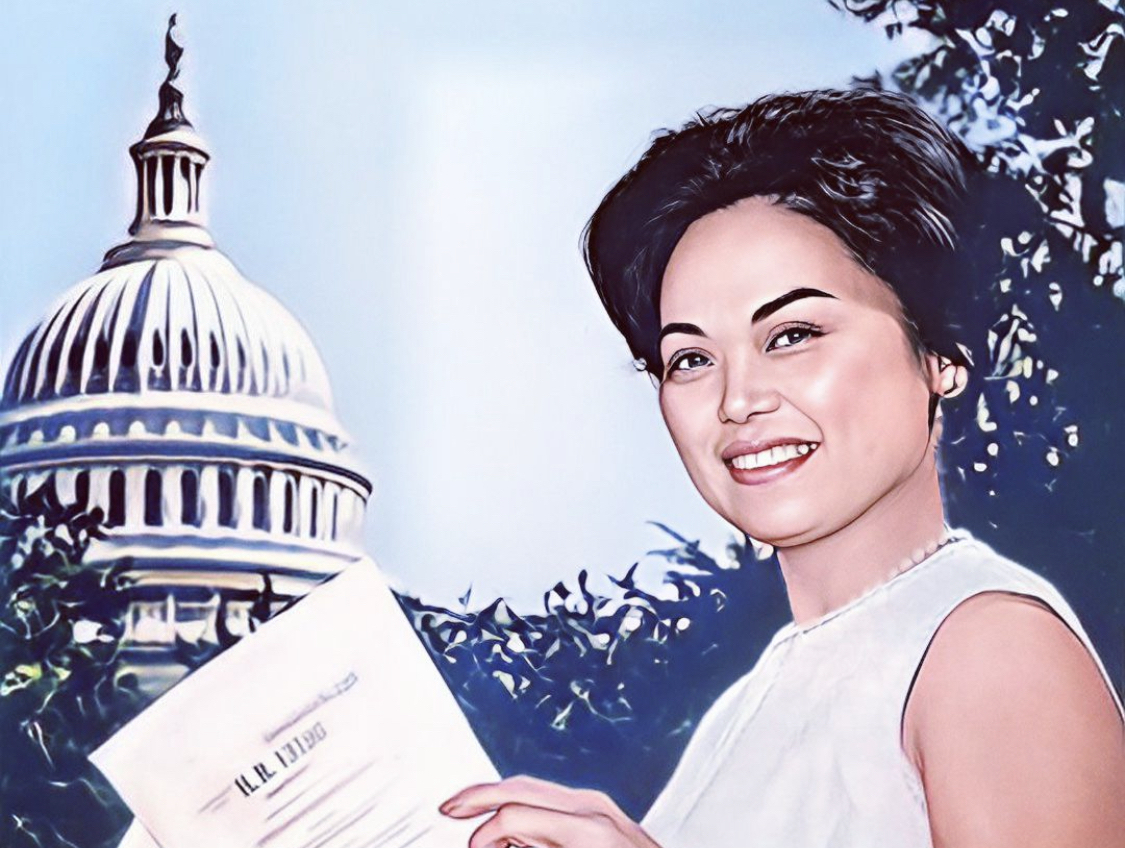With 2022 marking the 50th anniversary of Title IX, the landmark legislation that prohibits gender-based discrimination, the Pacific Citizen looks at the public and private life of Patsy Mink, the first Asian American Pacific Islander woman to serve in Congress — and the mother of Title IX.
By Lynda Lin Grigsby, Contributor
Picture this: A young woman pregnant with her first child is prescribed vitamins by her doctor. She faithfully swallows the round white pills to nourish herself and the life growing inside her body. More than two decades later, the woman receives a form letter from a researcher at the hospital where she received maternal care informing her that she had been an unwitting subject in an experiment during her pregnancy. The pills she took were not prenatal vitamins like she was told, but a synthetic form of estrogen prescribed to pregnant women at the time to prevent miscarriages and other pregnancy-related complications. Now, the letter tells the mother the drug is linked to reproductive health problems in the children exposed in utero.
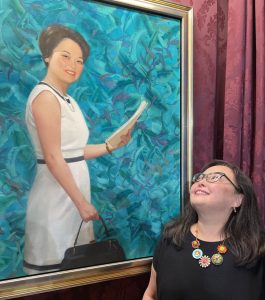
In June, a new portrait of Rep. Mink was unveiled at the House of Representatives. Wendy Mink was there. (Photo: Courtesy of Wendy Mink)
The drug was called Diethylstilbestrol (DES). The mother was Patsy Mink, the first Asian American Pacific Islander woman to serve in Congress, and her daughter, Gwendolyn Mink, or Wendy as she likes to be called, was a DES baby.
“That was horrifying on multiple levels,” said Wendy Mink, 70, by phone from Washington, D.C. Her mother, a well-known lawmaker who championed women’s rights, discovered that a medical experiment she was oblivious to for 24 years had violated her own rights. Her body had been used as a vehicle for transmitting chemicals to her daughter. The realization caused her mother anguish.
“It was just a basic sort of challenge to her own sense of having been a good mother,” said Wendy Mink.
Motherhood, in all its forms, is an expansive role that represents safety for generations of people who could find it nowhere else. But it also has its trappings, and women like Patsy Mink — a working mom who held public office and once ran for U.S. president — balanced on a knife’s edge of societal expectations.
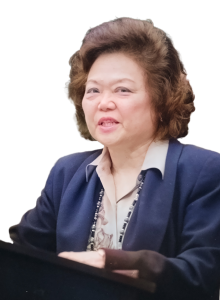
Patsy Mink, pictured here at a 1993 press conference on educational equity, was a passionate speaker. (Photo: Courtesy of Wendy Mink)
She had to be everything to everyone and somebody to someone. No one did this better than Patsy Mink, the mother of Title IX. Motherhood informed and fueled her work as a statesperson — not just a politician, as a former staffer insisted — because of her ano, what Hawaiians call the depth of character.
On the 50th anniversary of Title IX, the landmark legislation that prohibits gender-based discrimination, Patsy Mink’s legacy is enshrined in her role in positively affecting the lives of generations of mothers and daughters who wanted a fair shot at playing sports or attending school.
Like most mothers and mother figures, she wanted more for the women who came after her. Most of her work was invisible; built so generations after her could forget how hard it was before. Ultimately, she was also a mother who struggled with self-doubt. Am I doing right by the world?
Wendy Mink pauses at my question of her mother’s influence on her own life. The words fall out of her mouth in staccato phrases, then pointedly, she turns the question around on me.
“Could you answer that question about your own mother?”
I pause. Images swirl in my head of my mother’s jet-black hair and how her manicured nails contrasted with the callouses, badges of honor from a lifetime as a garment worker. How does one quantify the influence of a life-giver and a nurturer? It’s hard, Wendy Mink said, to step back and put an analytic lens on a deeply human, lifelong relationship. Especially if your mom spent her lifetime forcefully bending the arm of justice toward equality. This meant that Wendy Mink had to share her mother with the world.
It wasn’t always easy, according to Claire Shimabukuro, the daughter of Patsy Mink’s campaign manager in her early bids for Congress. In the podcast “Patsy Mink: The Untold Story,” Claire Shimabukuro talked about childhood playdates with Wendy Mink, who is the same age, while their mothers worked.
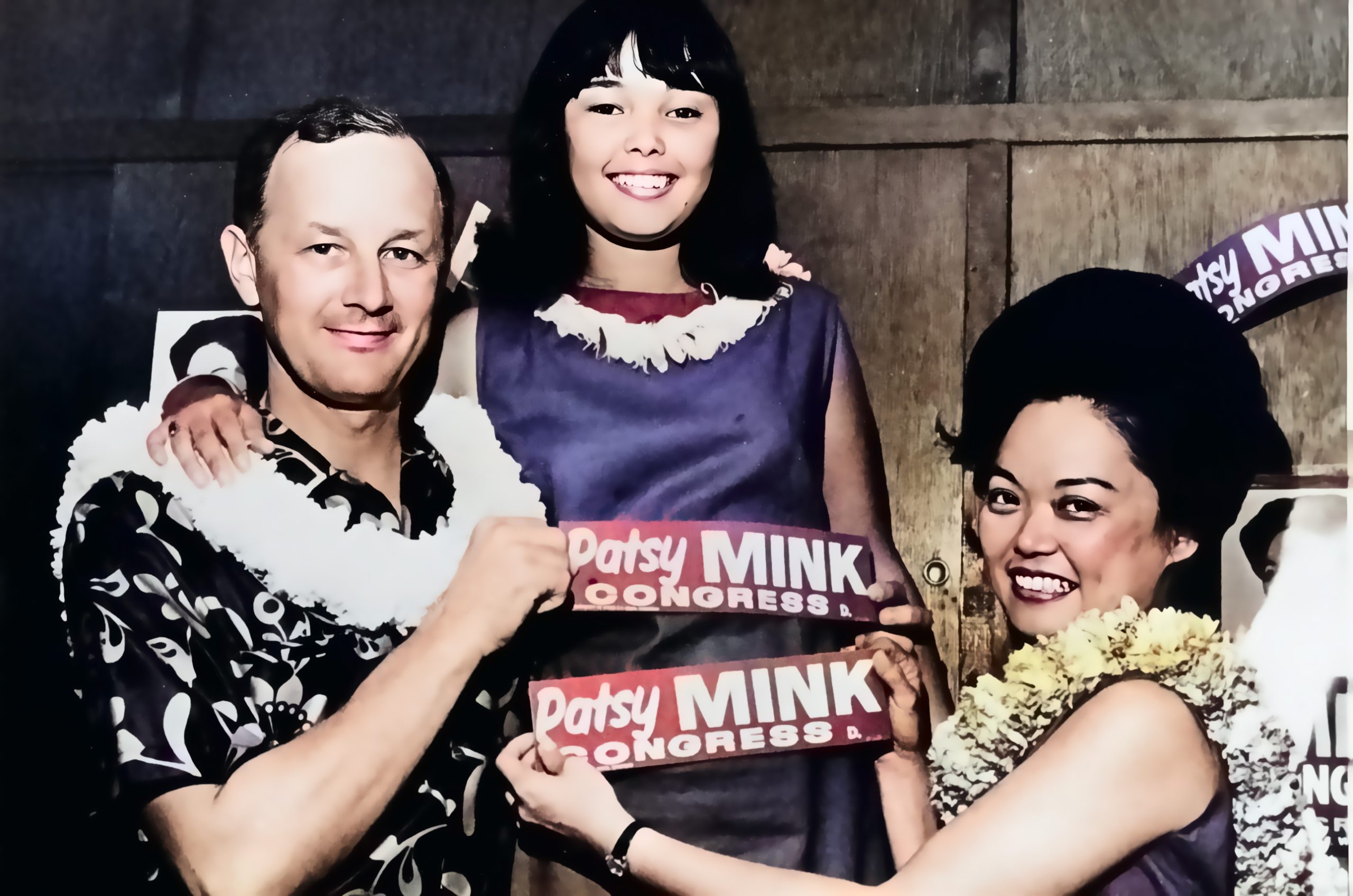
Patsy Mink with Wendy and John Mink in 1966. (Photo: Courtesy of Wendy Mink)
In these intimate settings, young Wendy Mink would express angst about not being able to see her mom regularly. It’s a theme echoed by other children of AAPI lawmakers in Congress, who back in the 1950s and ’60s, numbered fewer than a handful.
“He wasn’t always there,” said Daniel Ken Inouye Jr. in a 2014 Hawaii Herald article extolling his famous dad, the late senator, calling him a family man even when mostly physically absent. “He oftentimes would call back to the house to my mother, probably about four or five times a day, like whenever he had a break between meetings.”
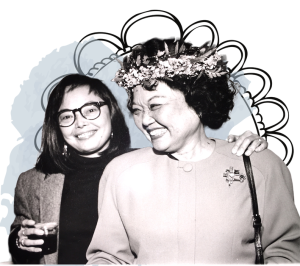
“There is a lot of her mom in her daughter,” according to a staffer. Wendy and Patsy Mink share a laugh here in 1993. (Photo: Courtesy of Wendy Mink)
No one questioned the physical distance between the senator and his namesake, often calibrating it as a sacrifice of the job — which it was. But there was much more distance and grace between father and son than mother and daughter, like Patsy and Wendy Mink in the same position, were ever afforded.
When Patsy Mink first won a historic seat in Congress in 1964 at 36 years old as the first AAPI woman of color, she was already a mother. Her daughter was then 12, well past her elementary school days in which she describes herself as a “hellion” who tested boundaries and questioned authority — normal behavior for any child, but acutely different for the daughter of a female elected official.
From an early age, Wendy Mink was hyperaware that how she chose to conduct herself disproportionately reflected on her mother. Before the bugbear of what is known today in modern parenting circles as “mom shaming” even had a name, Patsy Mink was living under its glare.
In the 1959 election season, when Wendy Mink was 7 years old, she said a rumor circulated that labeled her as “mentally retarded,” so shouldn’t a mother attend to such a child? In the political theater in which her mother was the star, there was an ever-present tone — a sotto voce she calls it — of neglect. Because of her race and gender in a high-profile job, her mother lived and worked within the smallest margin of error.
“I think the assumption that Patsy was not a good mother was very much a political weapon against her,” said Judy Tzu-Chun Wu, an author and professor of Asian American Studies at the University of California, Irvine.
In the third grade, Wendy Mink’s teacher told her if a nuclear attack were to happen during school hours, she would likely die alone because her mother was too busy being a politician to come to her rescue. It begs the question: Would a teacher say the same thing to an Inouye or a Matsunaga child?
“It’s hard to say. But I think for men, it’s a more natural arena for them to move into politics,” said Wu. “And they would have their supportive wives there to take care of the family responsibilities.”
In “Snow Theory,” a poem about his own mother, Ocean Vuong wrote, “I lay down over her outline to keep her true.” There is a lot of her mom in her daughter, said Herb Lee, a former staff member. But she is very much her own person. After Patsy Mink died in 2002 from viral pneumonia at 74, her daughter continues to share her mom with the world.
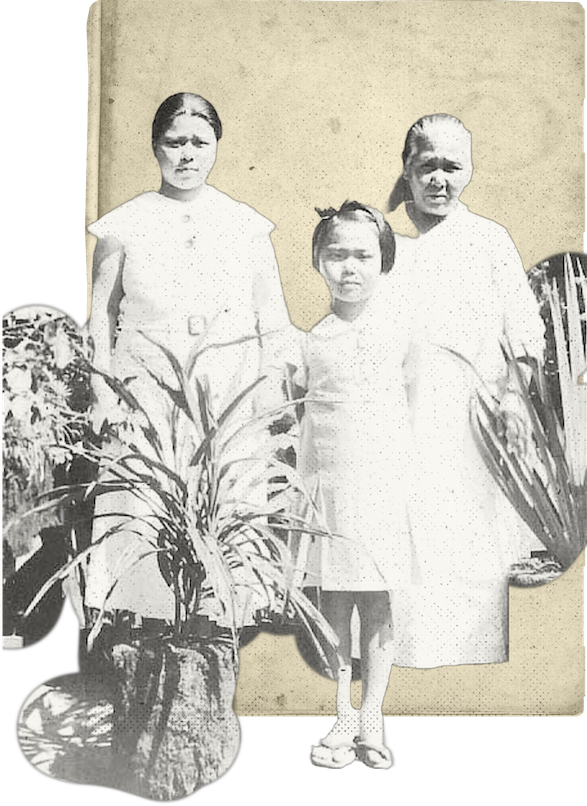
The Takemoto women: Patsy (center), her mom (left) and grandmother (right) (Photo: Courtesy of Wendy Mink)
This year, Wendy Mink co-authored a new book with Wu about her mother, “Fierce and Fearless,” and appeared in “Mink!” a short documentary about Title IX and how it almost didn’t happen because Patsy Mink, being a mom, missed the first vote to rush to her daughter’s side after a harrowing car accident. A second vote was called, and Title IX passed.
To the world, she was the mother of Title IX and a groundbreaker. To her daughter, she was just mom.
“She was ever present. Ever surveilling, ever generous with support. Ever inclusive of my needs and my interest and my participation in her life,” said Wendy Mink, a scholar and author. Mother and daughter enjoyed shopping and knitting; a hobby Patsy Mink picked up as a teenager trying to do her part in the war effort in the highly charged time for Japanese Americans during World War II — even in Hawaii. Her mother wasn’t a fancy knitter. There was no stitch-counting, just an emphasis on simplicity. She still has some of her mother’s creations — vests — tucked away in her closet.
Patsy Mink served in the House of Representatives for 24 years. Through all the political drama, her daughter had a behind-the-scenes seat. Her ticket was her birthright. In the Mink home, equality was always a topic of conversation — all data points leading up to Title IX.
When her daughter was in preschool, she noticed teachers encouraged girls to play house and have tea parties while they gave boys blocks and erector sets to build. Patsy Mink had a signature serious expression — brows furrowed — seen whenever she passionately spoke in front of Congress or constituents and undoubtably appeared when she appealed to preschool teachers to stop gender tracking.
“Are we a nation that believes in fairness and equality?” Patsy Mink asked rhetorically in a 1990 press briefing with other Democratic female lawmakers, with all the energy of a mom chiding a child, this time President George H. W. Bush, who vetoed the Civil Rights Act of 1990. Throughout her career, she posed the same question repeatedly as a challenge — when can we all step up to level the playing field?
“She was playing with sharks, right?” said Lee, 68, chief of staff when Patsy Mink was elected to the Honolulu City Council. “And it’s so easy to become a shark because that’s how the lifestyle is. But she was an anomaly in that fishpond.”
Throughout her career, Patsy Mink surrounded herself with family, both biological and chosen, to run her campaigns. She was the matriarch in the family, said Lee, now president and CEO of the Pacific American Foundation in Hawaii.
“Her family was the backbone of everything that she did. She was just the auntie, or the mom or the wife or, you know, the cousin,” he said.
A lot has positively changed for women because of Patsy Mink, but a lot stayed the same. Society holds up motherhood in an idealized way. Think of the iconic images of mothers carrying their newborn out of the hospital. Isn’t she lovely? Motherhood tropes are disjointed — the long-suffering stay-at-home mom and the industrious working mom — and leave mothers to fend for themselves without a support system. There is no standardized paid medical leave, equal pay or childcare. The work is hard and often invisible. It’s still hard out there for mothers.
In the 1950s and early ’60s, misogyny was openly held up, said Claire Shimabukuro, 70, and far more oppressive. But she often likes to ask young women a question:
Do you know where your justice comes from? It’s because of Patsy Mink. She is the mother you never knew you had.
After Patsy Mink received the 1976 letter revealing that she was an unwitting participant in the DES medical experiment, she and two other mothers sued the university and Eli Lilly, the Indianapolis-based pharmaceutical company that supplied DES pills saying the treatment was given without their consent. Doctors had written thousands of prescriptions to expectant moms as part of the experiment. The University of Chicago settled out of court. Her mother lived with the violation for the rest of her life.
Sometimes it’s hard not to bend under the weight of injustice. In 2022, women’s rights feel like they are going backwards. Wendy Mink admits this is true. But in 2002, on the 30th anniversary of Title IX, her mom celebrated the gains that the legislation permitted and admonished all of us not to rest on our laurels. Title IX is not self-enforcing. It requires women and girls to speak up when they encounter inequality.
The legislation is a lesson in the possibility of making big changes, but also the necessity of defending them. It’s what Patsy Mink would have wanted for us all.
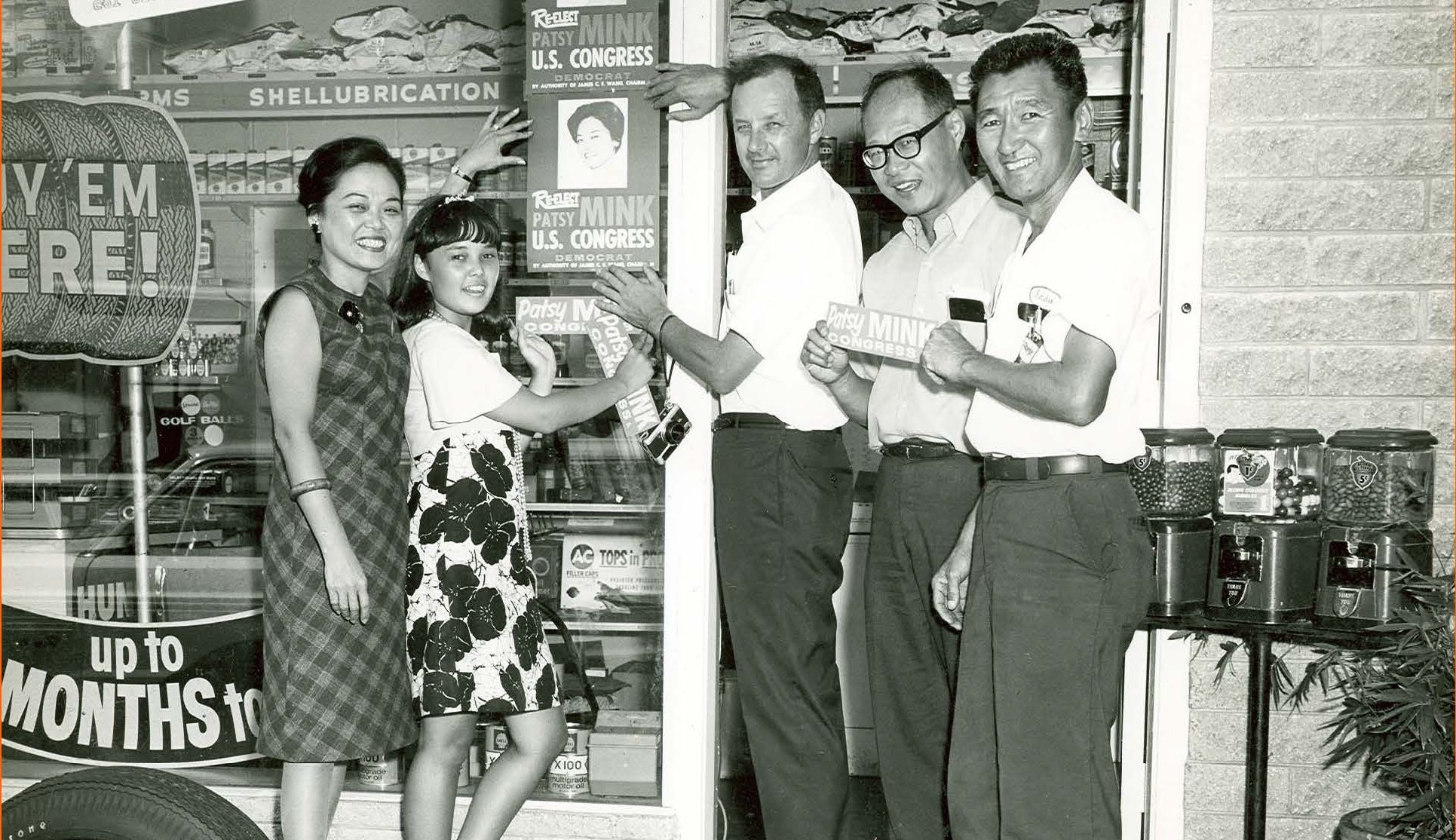
Throughout her career, Patsy Mink surrounded herself with family, both biological and chosen, to run her campaigns. She is pictured here with her family on the campaign trail in 1966. (Photo: Courtesy of Wendy Mink)

